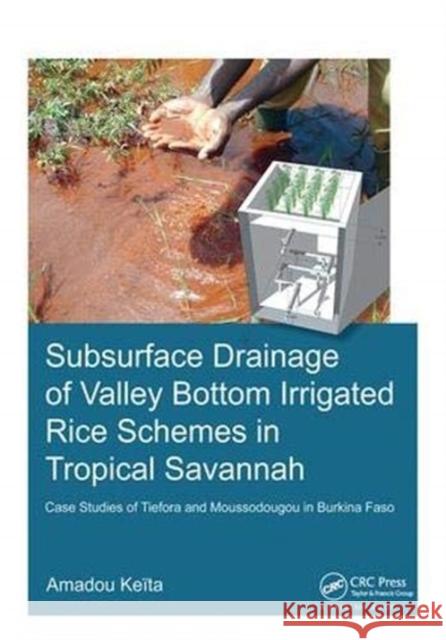Subsurface Drainage of Valley Bottom Irrigated Rice Schemes in Tropical Savannah: Case Studies of Tiefora and Moussodougou in Burkina Faso » książka
Subsurface Drainage of Valley Bottom Irrigated Rice Schemes in Tropical Savannah: Case Studies of Tiefora and Moussodougou in Burkina Faso
ISBN-13: 9781138381643 / Angielski / Twarda / 2018 / 222 str.
Subsurface Drainage of Valley Bottom Irrigated Rice Schemes in Tropical Savannah: Case Studies of Tiefora and Moussodougou in Burkina Faso
ISBN-13: 9781138381643 / Angielski / Twarda / 2018 / 222 str.
(netto: 527,73 VAT: 5%)
Najniższa cena z 30 dni: 528,93 zł
ok. 16-18 dni roboczych.
Darmowa dostawa!
This study was built to investigate the impact of subsurface drainage on iron toxicity in Tropical Savannah irrigated rice valley bottoms. The research leaned upon two complementary approaches: field investigations and designed experiments. Important results, covering several fields, where achieved. For example, It appeared that single-season irrigation schemes present higher iron toxicity and acidity risks than double-season ones – 750 up to 1800 mg/l of Fe2+ higher in the single-season scheme of Moussodougou than in the double-season scheme of Tiefora. Furthermore, a statistical analysis of flow time series (ARIMA model) data was performed. It showed that with a simple water level measurement probe installed at the main gate of the scheme, it becomes possible not only to quantify irrigation water consumption, but also to diagnose farmers' irrigation schedule, providing them a means to defuse potential conflicts due to inequity in water distribution. Finally, it was shown that subsurface drainage increases ferrous iron concentration in hematite dominant soils soil – from 935 mg/l to more than 1106 mg/l in the case of the soil of Moussodougou - but also fortunately alleviate soil acidity – from pH 5.6 to 7.3 in Moussodougou. This effect will eventually reduce ferrous iron intake by rice roots, alleviating toxicity.











